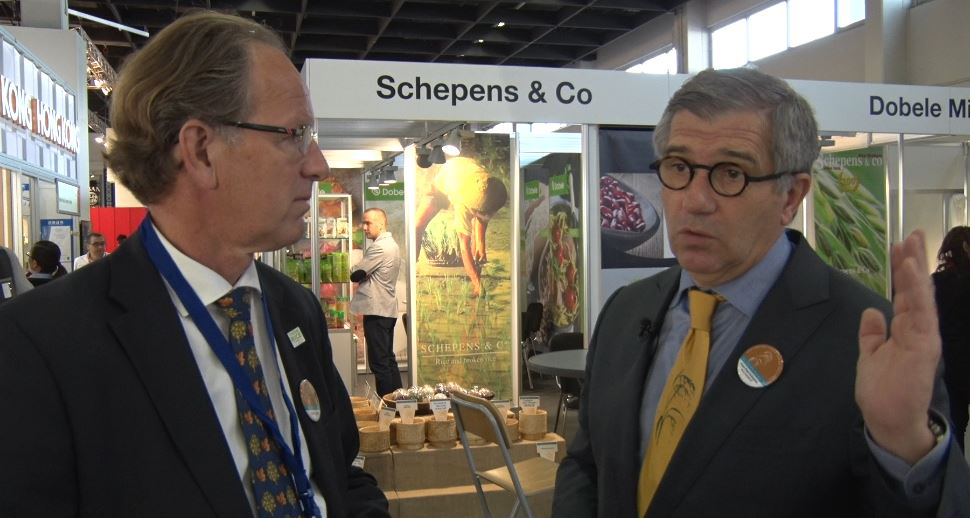 Jean-Paul Schepens (right) and USA Rice's Hartwig Schmidt working the rice ties
Jean-Paul Schepens (right) and USA Rice's Hartwig Schmidt working the rice ties
Oct 15, 2015
COLOGNE, GERMANY – Participating in Anuga 2015, the world’s largest food show wrapping up here, brings many questions to mind. “Is the gluten free trend continuing to grow in Europe and will this create opportunities for U.S. rice?” “Why are we now adding aloe to drinks, is this a thing?” and “What will it take for U.S. grown long grain rice to return to the European market?”
In the end, the answer to the last question seems to be all about risk management.
While the trade accepts and understands U.S. rice is free of genetically modified organisms (GMOs), U.S. rice is still seen as a risky proposition because of the EU’s zero tolerance with regard to GMOs. And as unrealistic as this policy is, it is still the law of the continent.
"We need to get another number besides zero, but there’s been no political progress on this,” said Jean-Paul Schepens, owner of Schepens & Company, one of the oldest and largest rice brokerage firms in the world and chair of the Rice Section at COCEREAL, the European Association of cereals, rice, and more.
And until the GMO issue is resolved, the threat of expensive recalls linger. But the GMO issue, while huge, is only part of the puzzle.
The EU Commission is reporting that over the last several years, japonica production in Europe is rising, while indica (long grain) is falling.
"Europe is traditionally a place where japonica rices were grown. It is only artificially that they have promoted long grain production in Europe, highly subsidized," said Schepens. "I would say Europe is going to continue specializing in japonica rice. We have already seen big increases this year, and eventually indica production will come down in Europe."
Schepens said that for the marketing year just ended, the EU has seen record high imports of long grain rice and record high exports of European japonica, mainly to Turkey.
"The forecast for next year is that we will see an increase for total EU rice production mostly in japonica," he said.
But one variety's opportunity could present a threat to another.
"The substantial increase in production of high quality japonica rice in Europe is something we'll need to keep an eye on as it is creating additional challenges for us in Europe and the Middle East," said Chris Crutchfield, president of American Commodity Company who was here at Anuga.
“The European market used to be focused on quality, but unfortunately over the last 10 or 15 years there have been shifts and now it is only a matter of a price," Schepens said. "The consequence has been that the quality of the rice you find in the supermarket has been going down.”
There doesn't seem to be any question about the quality of U.S. rice, but having been out of the market for years, reentering will be a matter of trust and price.
"We were forced to look for other origins and now we're quite happy with the quality we found," said Lionel Tissuet, Export Director for Soufflet Alimentaire, a huge food importing, manufacturing, retail company based in France. "The U.S. is going to need to become more competitive on the world market."
While that gets worked out, USA Rice participates in trade shows like Anuga to help spread the word and set the stage for the U.S.'s return.
“We are the ambassadors for U.S.-grown rice here working to improve and enhance the image for all varieties,” said Hartwig Schmidt, USA Rice regional director. "We also develop dozens of good trade leads for our members and when the time is right, we will be ready."